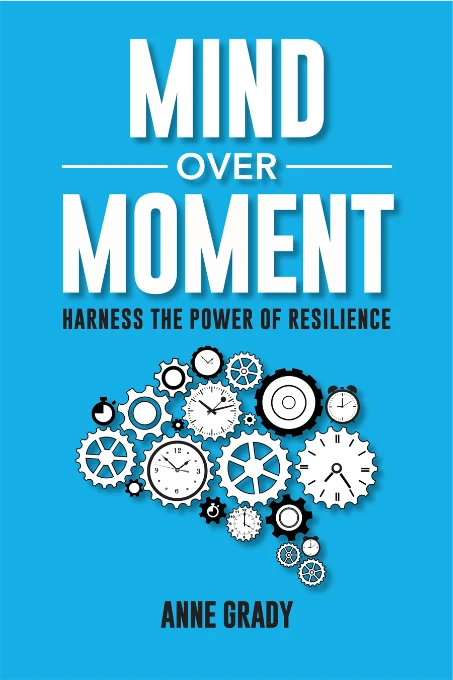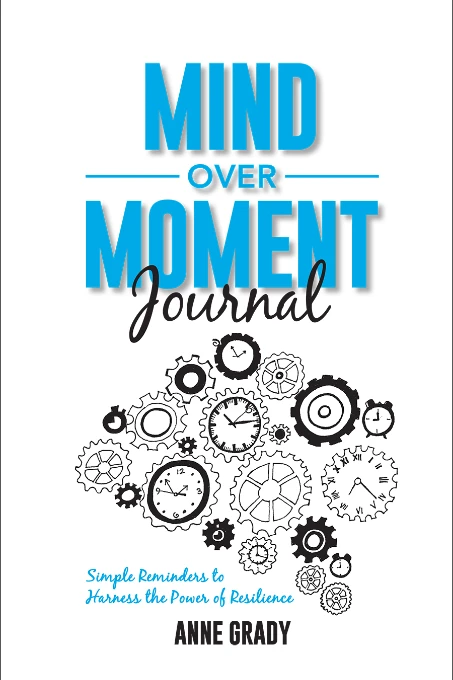Using Communication Styles to Get Winning Results
Using Communication Styles to Get Winning Results
Using Communication Styles to Get Winning Results
In last month’s post, we explored each of the different behavior styles. While understanding individual styles is helpful, no one is just one style. We each have a combination of styles which bring about some interesting results. Some people are fairly dominant in one or two styles. These folks have more difficulty “flexing” their style or operating out of their comfort zone, but their behavior is fairly consistent. Others are pretty even in two, three or even all four styles, meaning they have an easier time modifying their style, but they aren’t extremely consistent, and it is difficult to anticipate the most effective approach when communicating or working with them.
Remember, no style is good or bad, right or wrong. No style is better at parenting, relationships, work, life, or love. They each have strengths and weaknesses. Understanding style combinations gives us the ability to understand the subtleties that make people react, respond, and communicate the way they do. Armed with this knowledge, you can influence others to create positive outcomes for everyone involved.
Here are the most common one-two combinations and things you can do to maximize your style:
DRIVER & ANALYTICAL
A Driver/Analytical can balance speed and efficiency with precision and accuracy. Because both styles like to be in control and are goal-oriented, this combination creates a very strong personality. While high quality results are produced in a timely manner, you may rub people the wrong way, appearing cold or uncaring when focusing on achieving results.
To maximize your style:
Continue to focus on results, but temper that with other people’s need for relationship building. Make time for a little small talk and engaging with others about non work related issues.
DRIVER & EXPRESSIVE
If you’re a Driver/Expressive, you are a fast-paced, big picture thinker. You tend to be impulsive, jumping from task to task, get frustrated when others don’t keep up, and shy away from details. You get a lot done, and have fun doing it, but careless errors may be made in the process.
To maximize your style:
Realize that not everyone moves at your pace, and that’s ok. Practice patience, make an effort to finish one task before starting another, and spend a little more time focused on the details. Resist the urge to take control and dominate conversations.
DRIVER & AMIABLE
The Driver/Amiable deals with a constant internal struggle. You need to be in control and get results, but you don’t want to hurt others’ feelings or appear rude or overbearing. You are able to find balance between results and relationships but often have to fight your own nature to listen without taking over.
To maximize your style:
Resist the temptation to have to accomplish things your way. Even if you don’t agree with the other person’s approach, will it help accomplish the goal? If so, go with it. Focus on being assertive, rather than passive aggressive.
EXPRESSIVE & AMIABLE
If you’re an Expressive/Amiable, you’re all about relationships. You’re moderately paced, focusing more on people and the team than projects and results. The Expressive/Amiable is a great listener, always looking for ways to be supportive and nurturing, but often avoids conflict and confrontation, becoming passive aggressive in the process.
To maximize your style:
While relationships are most definitely important, make sure that you aren’t sacrificing results because of them. Stay focused on what needs to be accomplished and communicate assertively to those around you. Shy away from combat, but embrace healthy conflict.
EXPRESSIVE & ANALYTICAL
The Expressive/Analytical feels a similar struggle as the Driver/Amiable. You have the best of both styles, wanting to be fun, share stories, and be the center of attention, while also feeling the need to be extremely detail oriented. You have a tendency to want things done your way, challenge and question others, and often become emotional when not getting the desired result.
To maximize your style:
Realize that when you question people about what they are doing or the way they are doing it, it could be perceived as critical or judgmental. Resist the temptation to have the last word or the expectation that things have to be done your way.
AMIABLE & ANALYTICAL
If you’re an Amiable/Analytical, you are deliberate, slow-paced and patient, craving a great deal of information and detail, and needing a lot of time to process it. You take time to process and understand the world around you.
To maximize your style:
Make sure you occasionally come out of your comfort zone, being more expressive and assertive about what you need and want. While it may be difficult initially, you’ll become more assertive with practice, and it will lead to better results.
All of the explanations above are simply tendencies, meaning you could have two people with exactly the same style combination, and they may have very different personalities. So many variables go into making us who we are, and behavior style is merely one component of that equation. Your style, however, does provide insight into the way you perceive the world, manage your time, deal with conflict, and so much more.
Next month’s post will explore how to identify someone’s style (without giving them an assessment first).
In last month’s post, we explored each of the different behavior styles. While understanding individual styles is helpful, no one is just one style. We each have a combination of styles which bring about some interesting results. Some people are fairly dominant in one or two styles. These folks have more difficulty “flexing” their style or operating out of their comfort zone, but their behavior is fairly consistent. Others are pretty even in two, three or even all four styles, meaning they have an easier time modifying their style, but they aren’t extremely consistent, and it is difficult to anticipate the most effective approach when communicating or working with them.
Remember, no style is good or bad, right or wrong. No style is better at parenting, relationships, work, life, or love. They each have strengths and weaknesses. Understanding style combinations gives us the ability to understand the subtleties that make people react, respond, and communicate the way they do. Armed with this knowledge, you can influence others to create positive outcomes for everyone involved.
Here are the most common one-two combinations and things you can do to maximize your style:
DRIVER & ANALYTICAL
A Driver/Analytical can balance speed and efficiency with precision and accuracy. Because both styles like to be in control and are goal-oriented, this combination creates a very strong personality. While high quality results are produced in a timely manner, you may rub people the wrong way, appearing cold or uncaring when focusing on achieving results.
To maximize your style:
Continue to focus on results, but temper that with other people’s need for relationship building. Make time for a little small talk and engaging with others about non work related issues.
DRIVER & EXPRESSIVE
If you’re a Driver/Expressive, you are a fast-paced, big picture thinker. You tend to be impulsive, jumping from task to task, get frustrated when others don’t keep up, and shy away from details. You get a lot done, and have fun doing it, but careless errors may be made in the process.
To maximize your style:
Realize that not everyone moves at your pace, and that’s ok. Practice patience, make an effort to finish one task before starting another, and spend a little more time focused on the details. Resist the urge to take control and dominate conversations.
DRIVER & AMIABLE
The Driver/Amiable deals with a constant internal struggle. You need to be in control and get results, but you don’t want to hurt others’ feelings or appear rude or overbearing. You are able to find balance between results and relationships but often have to fight your own nature to listen without taking over.
To maximize your style:
Resist the temptation to have to accomplish things your way. Even if you don’t agree with the other person’s approach, will it help accomplish the goal? If so, go with it. Focus on being assertive, rather than passive aggressive.
EXPRESSIVE & AMIABLE
If you’re an Expressive/Amiable, you’re all about relationships. You’re moderately paced, focusing more on people and the team than projects and results. The Expressive/Amiable is a great listener, always looking for ways to be supportive and nurturing, but often avoids conflict and confrontation, becoming passive aggressive in the process.
To maximize your style:
While relationships are most definitely important, make sure that you aren’t sacrificing results because of them. Stay focused on what needs to be accomplished and communicate assertively to those around you. Shy away from combat, but embrace healthy conflict.
EXPRESSIVE & ANALYTICAL
The Expressive/Analytical feels a similar struggle as the Driver/Amiable. You have the best of both styles, wanting to be fun, share stories, and be the center of attention, while also feeling the need to be extremely detail oriented. You have a tendency to want things done your way, challenge and question others, and often become emotional when not getting the desired result.
To maximize your style:
Realize that when you question people about what they are doing or the way they are doing it, it could be perceived as critical or judgmental. Resist the temptation to have the last word or the expectation that things have to be done your way.
AMIABLE & ANALYTICAL
If you’re an Amiable/Analytical, you are deliberate, slow-paced and patient, craving a great deal of information and detail, and needing a lot of time to process it. You take time to process and understand the world around you.
To maximize your style:
Make sure you occasionally come out of your comfort zone, being more expressive and assertive about what you need and want. While it may be difficult initially, you’ll become more assertive with practice, and it will lead to better results.
All of the explanations above are simply tendencies, meaning you could have two people with exactly the same style combination, and they may have very different personalities. So many variables go into making us who we are, and behavior style is merely one component of that equation. Your style, however, does provide insight into the way you perceive the world, manage your time, deal with conflict, and so much more.
Next month’s post will explore how to identify someone’s style (without giving them an assessment first).

Anne Grady is a Speaker, Author, and #TruthBomb Dropper.
Anne shares practical strategies that can be applied both personally and professionally to improve relationships, navigate change, and triumph over adversity. And she’ll make you laugh while she does it. Anne is a two time TEDx speaker, and her work has been featured in numerous media outlets, including Harvard Business Review, Entrepreneur, Forbes, Fast Company and Inc. magazines, CNN, ESPN, and FOX Business. She is the best selling author of Mind Over Moment: Harness the Power of Resilience, 52 Strategies for Life, Love & Work, and Strong Enough: Choosing Courage, Resilience and Triumph.





Excellent!
Thanks Eddie! Hope all is well!